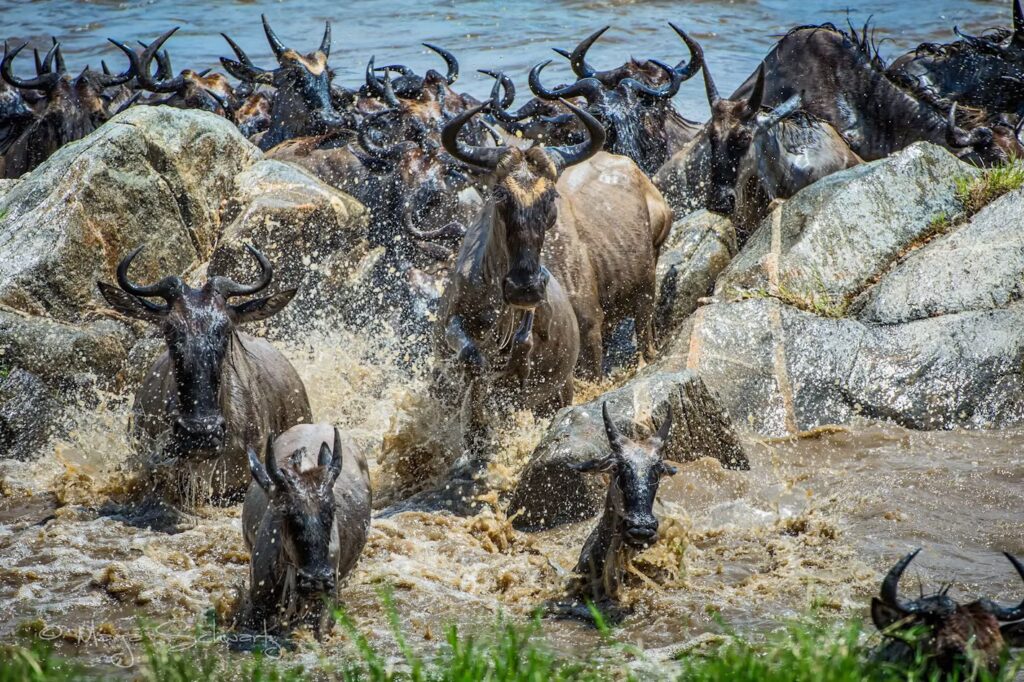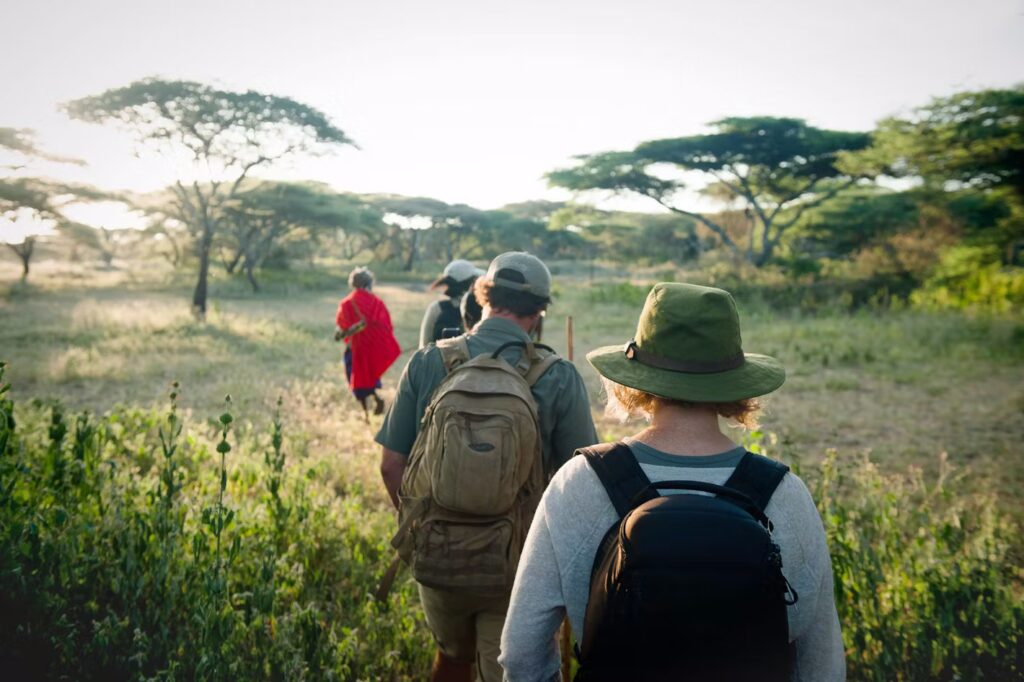The Best Time to Visit Tanzania for Safari
Table of Contents
Tanzania is a safari paradise, offering some of the most iconic wildlife experiences on the planet. From the endless plains of the Serengeti to the dramatic landscapes of the Ngorongoro Crater, this East African gem is a dream destination for nature lovers and adventure seekers alike. However, choosing the best time to visit Tanzania for a safari can be a bit overwhelming, given the country’s diverse climate and seasonal wildlife patterns. In this guide, we’ll dive deep into the best times to visit Tanzania, breaking down the pros and cons of each season, highlighting key wildlife events, and providing practical tips to help you plan the ultimate safari adventure.
Understanding Tanzania’s Climate and Seasons
Tanzania’s climate is shaped by its equatorial location and varied topography, which includes coastal areas, highlands, and vast savannahs. The country experiences two main seasons: the dry season and the wet season. The dry season, which runs from late June to October, is characterized by sunny days, cool nights, and minimal rainfall. The wet season, from November to May, is divided into the short rains (November to December) and the long rains (March to May). Each season offers unique advantages for safari-goers, depending on what you want to experience.
Dry Season (June to October):The Peak Safari Period
The dry season is widely regarded as the best time to visit Tanzania for a safari. During this period, the weather is pleasant, with clear skies and comfortable temperatures. The lack of rain means that vegetation is sparse, making it easier to spot wildlife as animals gather around water sources like rivers, lakes, and waterholes. This is also the time when the Great Migration reaches its peak in the Serengeti, offering some of the most dramatic wildlife spectacles on Earth.
The Great Migration: A Dry Season Highlight
The Great Migration is one of the most awe-inspiring natural events in the world, and timing your visit to coincide with this phenomenon is a bucket-list experience. From June to August, the herds of wildebeest, zebras, and gazelles move through the western Serengeti, crossing the Grumeti River in a thrilling display of survival as they evade predators like crocodiles and lions. By September and October, the migration reaches the northern Serengeti and the Mara River, where the iconic river crossings take place. These crossings are a photographer’s dream, offering dramatic scenes of thousands of animals braving the treacherous waters.
Wildlife Viewing During the Dry Season
The dry season is ideal for game viewing across Tanzania’s national parks. In the Serengeti, you’ll have the chance to see the Big Five (lion, leopard, elephant, buffalo, and rhino) as well as cheetahs, hyenas, and giraffes. Tarangire National Park is another highlight during this time, as large herds of elephants gather around the Tarangire River. The Ngorongoro Crater, often referred to as the “Garden of Eden,” offers unparalleled wildlife density in a stunning volcanic setting, making it a must-visit destination during the dry season.
Crowds and Costs During the Dry Season
While the dry season offers the best wildlife viewing, it’s also the busiest time of year for safaris in Tanzania. Popular parks like the Serengeti and Ngorongoro Crater can get crowded, especially in July and August, which coincide with the northern hemisphere’s summer holidays. Accommodations in these areas often book up months in advance, and prices for lodges and tours tend to be at their highest during this peak season. If you prefer a quieter experience, consider visiting during the shoulder seasons (late October to early November or late February to early March), when crowds are thinner and prices are more affordable.


Short Rains (November to December): A Hidden Gem
The short rains, which occur from November to December, mark the transition from the dry season to the wet season. While there may be occasional showers, the rains are usually brief and followed by sunshine. This is a great time to visit if you want to avoid the crowds and enjoy lower prices. The landscape begins to turn green, and migratory birds arrive, making it an excellent time for birdwatching. Wildlife is still relatively easy to spot, as animals remain concentrated around water sources.
Wildlife During the Short Rains
During the short rains, the Great Migration herds are typically in the southern Serengeti, where the calving season begins in late December. This is a fantastic time to see newborn wildebeest and zebras, as well as the predators that follow them. The southern Serengeti is less crowded during this period, offering a more intimate safari experience. Additionally, the lush greenery and blooming flowers create a picturesque backdrop for photography.
Long Rains (March to May): The Green Season
The long rains, from March to May, are the wettest time of year in Tanzania. While this season is less popular for safaris, it has its own unique appeal. The landscape is lush and green, and the parks are quieter, offering a more intimate safari experience. However, some lodges and camps close during this period, and road conditions can be challenging, particularly in remote areas. Wildlife is more dispersed during the wet season, as animals have access to water throughout the parks.
Pros and Cons of Visiting During the Long Rains
The long rains are a mixed bag for safari-goers. On the one hand, the scenery is stunning, with vibrant greenery and dramatic skies. The parks are less crowded, and you may be able to secure last-minute bookings at discounted rates. On the other hand, wildlife viewing can be more challenging, as animals are not as concentrated around water sources. Some areas may be inaccessible due to flooding, and the constant rain can make outdoor activities less enjoyable. If you don’t mind the rain and are looking for a budget-friendly option, this can still be a rewarding time to visit.
Birdwatching in the Wet Season
The wet season is a paradise for birdwatchers, as migratory birds flock to Tanzania’s parks and reserves. Lake Manyara National Park, in particular, is a hotspot for birdwatching, with species like flamingos, pelicans, and storks filling the skies. The lush vegetation also provides excellent opportunities for photography, with vibrant colors and dramatic lighting creating stunning compositions.
Calving Season in the Southern Serengeti
One of the highlights of the wet season is the calving season in the southern Serengeti, which typically occurs from late December to March. During this time, hundreds of thousands of wildebeest give birth to their young, attracting predators like lions, cheetahs, and hyenas. This is a thrilling time to visit if you want to witness the circle of life in action, with plenty of opportunities to see predator-prey interactions.
Shoulder Seasons: The Best of Both Worlds
The shoulder seasons—late October to early November and late February to early March—offer a balance between the dry and wet seasons. During these periods, you can enjoy good wildlife viewing, fewer crowds, and lower prices. The weather is generally pleasant, with occasional showers that keep the landscape green and vibrant. These transitional periods are ideal for travelers who want to experience the best of both worlds without the extremes of the peak dry or wet seasons.
Climate Variations Across Tanzania
Tanzania’s climate varies depending on the region. Coastal areas like Zanzibar are hot and humid year-round, while the highlands around the Ngorongoro Crater and Mount Kilimanjaro can be cool, especially at night. The northern safari circuit (Serengeti, Ngorongoro, Tarangire) has a more temperate climate, with warm days and cool evenings during the dry season. When planning your safari, consider the climate of the specific regions you’ll be visiting and pack accordingly.
Choosing the Right Time for Your Safari
When deciding on the best time to visit Tanzania, consider your priorities. If wildlife viewing is your top priority, the dry season (June to October) is your best bet. If you prefer fewer crowds and lower prices, the wet season (November to May) may be more appealing. For a balance of good weather, wildlife, and affordability, the shoulder seasons are an excellent choice. Additionally, think about any specific wildlife events you want to witness, such as the Great Migration or the calving season, and plan your trip accordingly.
Combining Safari with Other Activities
If you’re planning to combine your safari with other activities, such as climbing Mount Kilimanjaro or relaxing on Zanzibar’s beaches, consider the best time for those experiences as well. Kilimanjaro climbs are best attempted during the dry seasons (January to March and June to October), while Zanzibar’s beaches are ideal year-round, with the best weather from June to October. By aligning your safari with these activities, you can create a well-rounded itinerary that maximizes your time in Tanzania.
Final Tips for Planning Your Safari
Book Early: Popular lodges and camps fill up quickly during the dry season, so it’s best to book several months in advance.
Pack Smart: Bring lightweight clothing for warm days, layers for cool evenings, and rain gear if you’re visiting during the wet season. Don’t forget essentials like sunscreen, insect repellent, and a good pair of binoculars.
Work with a Reputable Tour Operator: A knowledgeable tour operator can help you navigate Tanzania’s seasons, choose the best parks for your interests, and handle logistics like transportation and accommodations.
Be Flexible: Wildlife sightings can be unpredictable, so be prepared to adjust your plans to make the most of your safari experience.
Conclusion: Timing Your Perfect Safari
Tanzania is a year-round destination, but the best time to visit depends on your interests and priorities. Whether you’re drawn to the drama of the Great Migration, the tranquility of the wet season, or the balance of the shoulder seasons, Tanzania promises an unforgettable safari experience. By understanding the country’s seasons and wildlife patterns, you can plan your trip to align with your dream safari adventure. So, when will you visit Tanzania? The wild is calling, and the adventure of a lifetime awaits!
What Our Clients Say
Book with Us now
Let us arrange your plan for your Tanzania trip; we are here to help you.